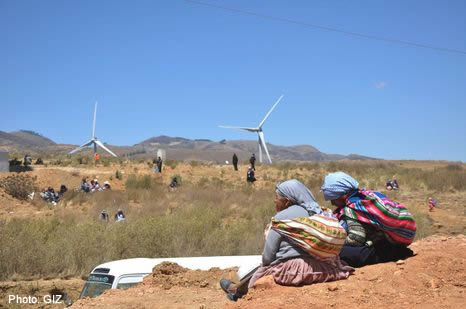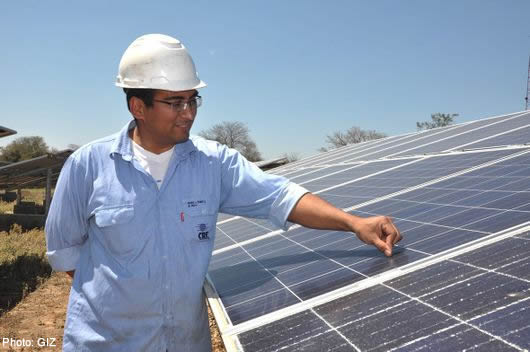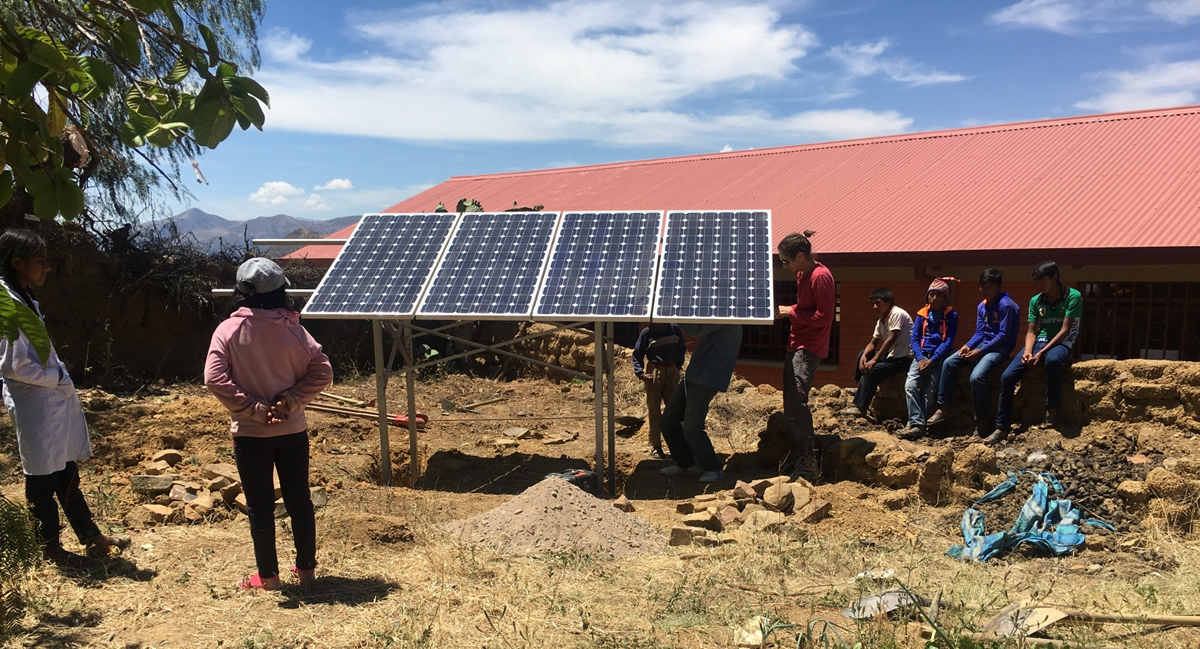The Bolivian government has launched an ambitious plan to diversify its national energy portfolio and improve energy access for populations living in rural areas. Part of the country’s comprehensive electricity plan features an important increase in capacity, which is currently facing a challenge as the population grows. In addition to a buildout of hydro resources, one of their main goals is a commitment to the rapid development of distributed renewable energy, including the construction of microgrids. Microgrids are key to improving energy access in remote areas of the country, and in helping Bolivia to meet its goal of 97 percent national energy access in 2020, with 100 percent access in urban areas and 90 percent in rural areas.

HOMER Energy is a part of this effort. HOMER support engineer Aleph Baumbach traveled to Bolivia to provide training (in Spanish) on the design and deployment of microgrids using HOMER Pro. The audience was made up of utility engineers, government officials, international agencies and commercial developers. Aleph explains that in 2005 Bolivia had the lowest rate of electricity access in Latin America, with only about 30 percent of the rural population connected. As of 2017, the access rate was up to 77 percent, but to achieve universal access the government will have to deliver electric service to an additional 220,000 households in rural areas. While grid extensions have made it possible to increase energy access in the past, the country has a lot of inaccessible, mountainous terrain. “Now they’ve expanded as much as they can using traditional means,” Baumbach says, “but it’s not feasible to create transmission lines in these areas. They need a new approach for the rural communities that still don’t have access,” he reports. He said the training attendees were excited to learn how to use HOMER Pro to do break-even comparisons between microgrid construction and the extension of transmission lines.
Baumbach has also participated in meetings of the Inter-American Development Bank in Washington to present information on microgrid technology and explain how microgrids might fit into the country’s current energy planning. The IDB is working to determine how disruptive technologies such as microgrids might fit into Bolivia’s plan for universal access; the bank is also advocating for the creation of a map that shows which unelectrified communities are good candidates for microgrid solutions.
Bolivian law now enshrines energy as a human right

Bolivia remains one of the poorest countries in Latin America. It has high levels of income inequality, and much remains to be done to raise the standard of living among the rural poor. In 2006, the new government of President Evo Morales declared energy access to be a fundamental human right, and many of the country’s recent energy initiatives grow out of that conviction. In the 1990s, Bolivia’s electric industry was mostly privatized, but its private sector owners failed to invest in infrastructure that benefited rural areas. Now President Morales believes that resources should be deployed in the near term to make electricity access for the rural poor a top priority. Morales has also re-nationalized the electricity industry and other institutions that were privatized in the 1990s, and led the call for broad diversification of the energy sector. Renewable energy – both in terms of solar home systems and small-to-medium scale utility systems that can power remote communities – is a key government initiative.
One Morales policy that is drawing opposition from indigenous communities and environmentalists is his plan to build massive hydroelectric projects. The dams that would be required for such mega projects would deprive many indigenous communities of their land, and threaten fragile ecosystems that support rare species. Government support for solar is less controversial, and those programs are just getting underway.
Developing the non-hydro renewable energy sector
In terms of energy, Bolivia is heavily dependent on biomass, with close to 70 percent of the population reliant on wood fuel for cooking and heating. Unfortunately wood is becoming scarce in arid parts of the country, and deforestation is an issue where wood is still abundant. However, the country does have abundant solar resources, particularly in the high altitude regions of the west, which happen to be the areas where most of the country’s indigenous people live.

One organization that is trying to help Bolivia develop its renewable energy potential is GIZ (” The Deutsche Gesellschaft für Internationale Zusammenarbeit GmbH”), Germany’s international development agency. One of the world’s largest foreign aid programs supporting clean energy, GIZ has been working with Bolivia’s Ministry of Energy to introduce renewable energy technologies. According to Alejandra Prada Rivero, a technical advisor in renewable energy, this effort is just getting started and currently involves small-scale utility projects. GIZ efforts are targeting remote communities where the people don’t have electricity.

Aside from the national grid, which is managed by Bolivia’s state-owned utility, there are also many isolated grids that are run by smaller companies and cooperatives. Over 90 percent of these isolated grids currently generate electricity using diesel generators or other fuels.
One of the biggest challenges, says Prada Rivero, is that “electricity is too cheap. Natural gas and utility tariffs are subsidized by the government.” So it is these isolated grids that are the focus of GIZ and that are best candidates for the introduction of renewable energy. Greening Bolivia’s small, isolated grids by adding solar PV, for example, will ultimately produce electricity that is cleaner – and cheaper – for everyone. GIZ will provide consulting on regulatory reform that encourages renewable energy; at the regional level it will advise energy companies on the planning, construction and operation of grid-tied and off-grid projects that use solar, wind and energy storage; it will support training and capacity building in renewable energy projects. In fact it was GIZ that invited HOMER Energy to Bolivia to present microgrid training.
At the moment, Bolivia’s national energy plan only calls for four percent non-hydro generated renewable energy, but if renewable energy can prove its value through investments on isolated grids, that goal could evolve.

Very good initiative by The Bolivian government, I think this is the right way to solve the problem of electricity in such rural areas.
Thank you for your comment Mohanish.
All the best,
Lili Francklyn